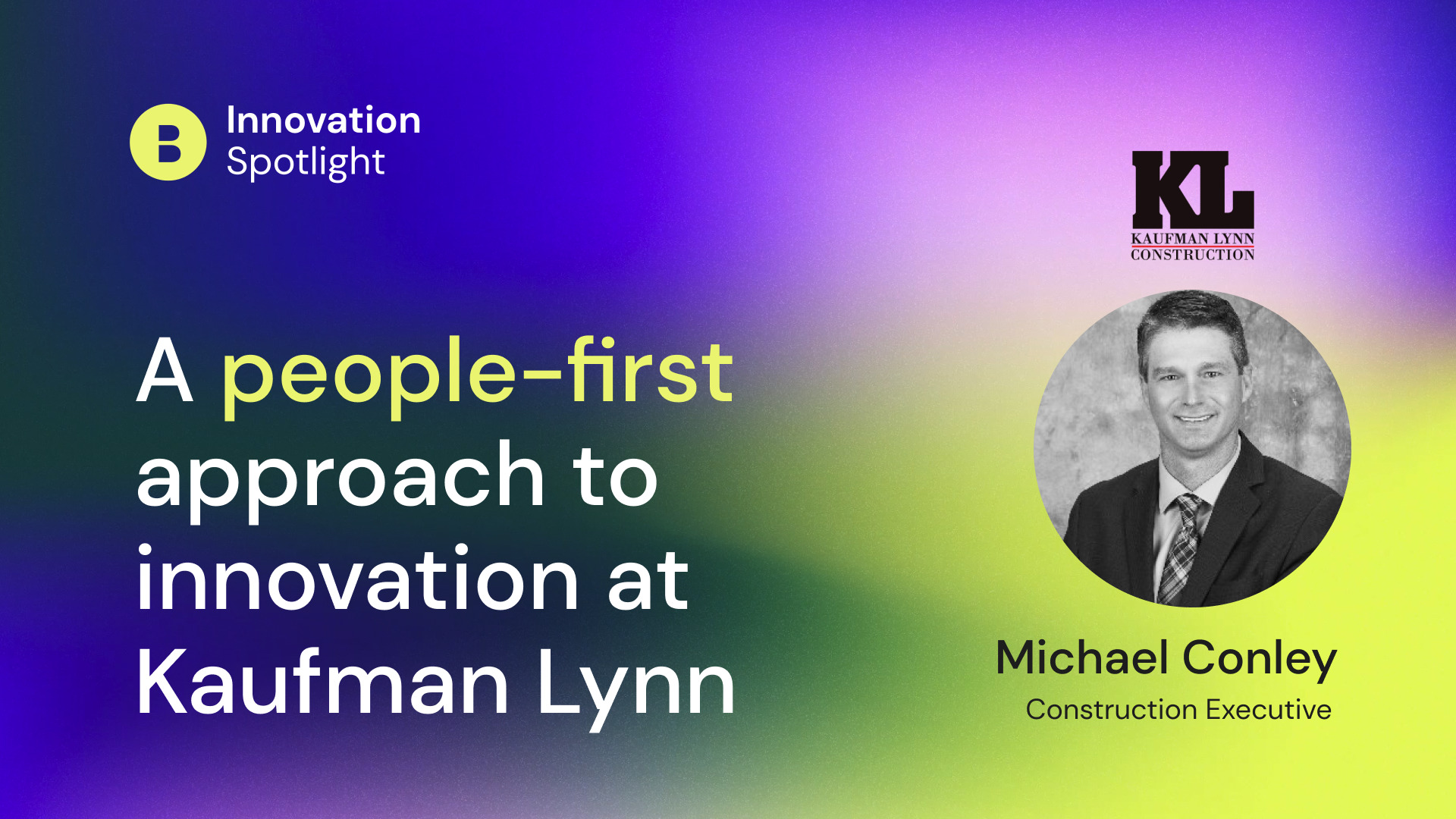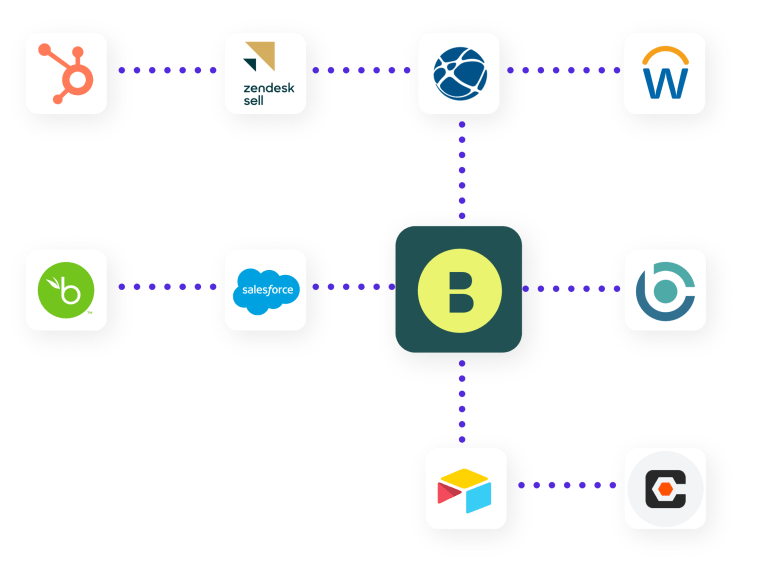The team at Bridgit recently had the pleasure of hosting Michael Conley, a Construction Executive at Kaufman Lynn Construction, for our most recent episode of ‘Innovation Spotlight’. We created the Innovation Spotlight series to share how leaders in the construction space are innovating across the board. Check out our entire Innovation Spotlight series on our media page.
Table of Contents
Kaufman Lynn (KL), #193 on the ENR 400, is a Florida-based, full-service construction company founded in 1989 with experience that includes:
- Multi-family housing
- Senior living
- Hospitality
- Government/Public Safety
- Education
- Healthcare
As mentioned earlier, we had the chance to talk with Michael Conley, a Construction Executive at Kaufman Lynn Construction with over 25 years of experience in construction, about how they drive innovation at Kaufman Lynn from concept to construction.
Here are the key takeaways from our conversation with Conley about how Kaufman Lynn drives innovation and fosters a culture of continuous improvement.
Key takeaways from our conversation with Kaufman Lynn
1. Innovate through talent
Contractors don’t need to look externally for innovative solutions to construction problems. Sure, plenty of software and technology companies are breaking down core processes and reimagining how project planning is done. However, taking an innovative approach to problem-solving requires that problems are first identified. Who better to identify problems than the people who experience them daily?
The team at Kaufman Lynn starts planting the seeds of innovation in their team members from day one. Well, even before then. “Even though a resume has a lot of metrics, like time, places, projects, etc.” explains Conley about recruiting new talent at KL, “We try to dive into the person behind the resume. We ask questions about how they handle challenging situations or think outside the box. We try to get them to give ideas they might not even think are related to the construction industry.”
It could be related to something they had to deal with in their personal life or a community service project that could be brought to the industry. The idea is to find people capable of thinking beyond “it’s just a tool” or “it’s just a software program” and expanding their mindset to find new ways to solve problems.
“We’re finding that our biggest innovations come from our people.”
Michael Conley, Construction Executive at Kaufman Lynn Construction
2. Encourage your team to take initiative… and evaluate
Innovation within a company will always start with someone taking initiative. It’s a change, which means you’ve got a process locked in, but someone raises their hand and says, “I have an idea.”
“Companies like Kaufman Lynn that have been around for many years have a way of doing things,” explains Conley. “When you bring an innovation or an initiative to the table, you need to be very careful about how many people are looking at it, how many people are looking at what the problem is, and how you are identifying the problem.”
Companies like Kaufman Lynn have very specific leaders and very specific roles. For anyone looking to bring an innovation forward, it’s a good idea to bring a few of those leaders into the mix to be the committee on evaluating the initiative. “If you bring 10, 15, 20 people, it’s like trying to have 18 cooks in the kitchen,” says Conley. “You have to trust that the people around you are evaluating the solution and then bringing it to the leaders. Both the ‘goods’ and the ‘bads’ of the initiative.”
There are many ways to identify problems, one that Kaufman Lynn uses is called ‘A3 problem solving’. A3 was designed by Toyota to examine the cause and effects of a problem to get down to the root of it. Getting to the root problem means getting to the root solution. It also helps to establish how the root solution should be evaluated. Sometimes, a new software or technology can seem ideal, but if a company just implements it and doesn’t really evaluate it, it fails. The other mistake a contractor can make is putting too many people in the room trying to make a final decision.
There will be times when you might spend 2-3 months evaluating a new software. The end results might be positive or negative, but it’s better to take that time up front and evaluate it, than to just blindly roll something out across the organization.
3. Start small
One of the key things Conley recommends is pilot testing. “We would bring something in and we’d have a small group to see how it works,” explains Conley. “We’d be very specific about the pros and the cons. We don’t try to bring it to 16 jobs at once. We start with a small group. Pilot testing is one of the tools we use at KL.”
“With Bridgit Bench, it was fairly unique,” says Conley of KL’s pilot testing of our workforce management solution. “We gave a list of jobs and people, and Bridgit created a demo account that allowed us to see our company, our names, our people, with let’s say, four or five jobs. Instead of presenting a PowerPoint to our leaders, we were actually able to log in and go to a project.”
4-5 projects may not seem like that much in the grand scope of things, but It allowed KL to see the Gantt charts, the forecasting, the people within the organization, and the history of each person. “That really made us feel comfortable with the software that we chose,” says Conley. “Like a pig in mud, we got to roll around in it a little bit, get a little bit dirty, figure out what we liked, and to be honest, figure out what we didn’t like.”
Contractors shouldn’t hesitate to ask for sandbox or demo environments to help evaluate potential software or technology. Software providers should be happy, dare I say excited, to show off the value their tool or platform can offer your business.
Think your workforce planning meetings could be more productive?
Download our ebook to learn how to run efficient, effective workforce planning meetings with your team.
4. Share failures
The biggest thing about challenges or mistakes being made in the past is not repeating those mistakes, and learning from them. “The interesting thing that I want to instill on my team is to not hold that information to themselves,” says Conley. “It’s about the story. Anytime I have a team and a project, even if it might not be related to the job, it’s humbling to say to them, ‘Let me tell you, I’ve made mistakes.’”
Sharing failures is about being open and explaining to your team that you have to address mistakes, you have to learn from them, and equally important, you have to share them. Sharing helps to break down that ice cold conversation in a conference room. Sharing helps your team feel more comfortable talking about their own mistakes, how they navigated solutions, and steps they’re taking to make sure it doesn’t happen again.
Sharing failures empowers your team members to ask questions before they fail. Sharing your own failures builds trust. According to Conley, “If you can instill that in your team and drill it down three, four, five levels, you’ll have a team that’s working a lot more cooperatively together, and I’ve seen great success in that.”
Feel free to check out the full recording of our conversation with Kaufman Lynn below.




